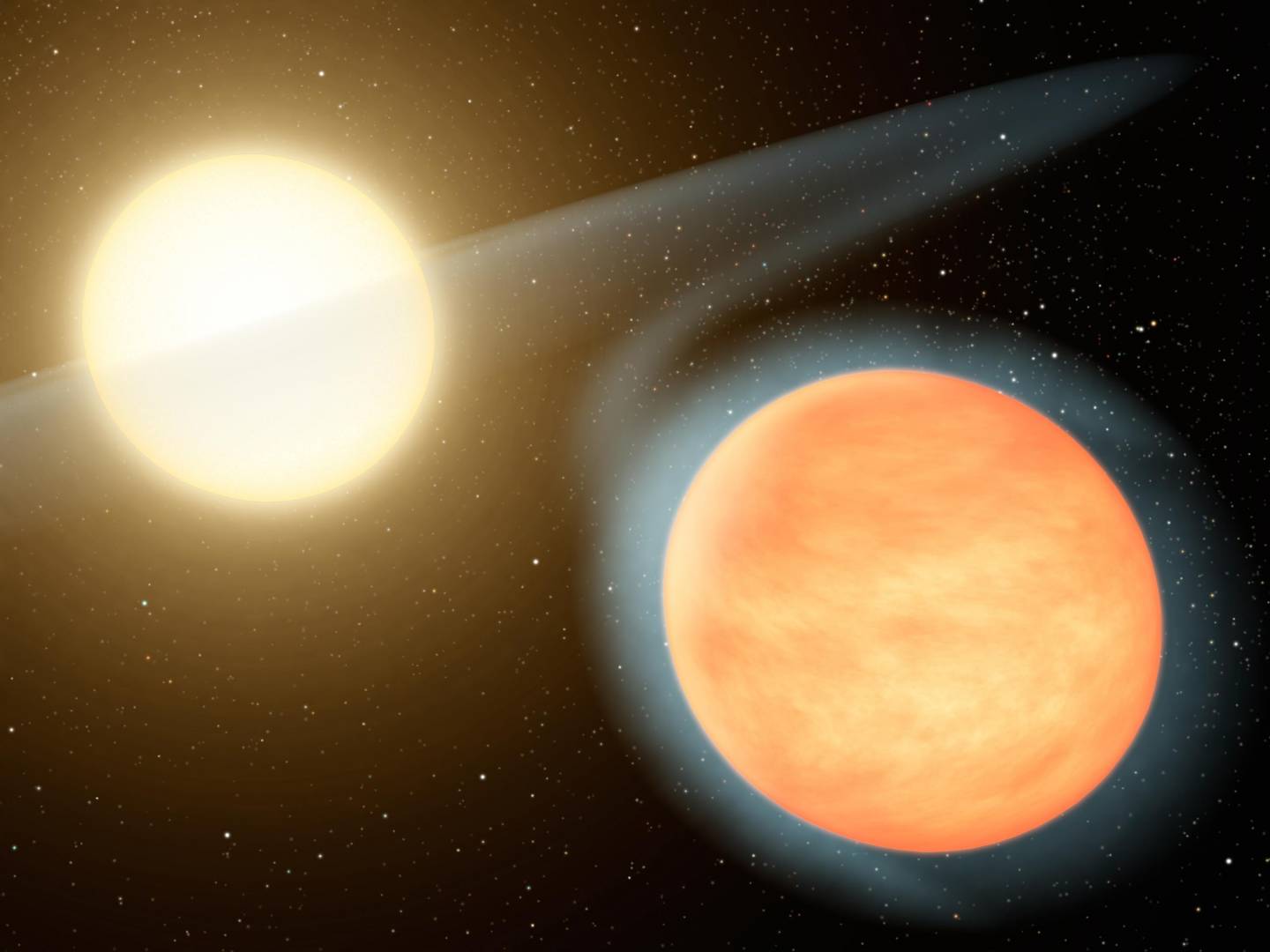Astronomers estimate that in about four billion years, our Sun will exit the main sequence phase of its existence and become a red giant. This will consist of the Sun running out of hydrogen and expanding to several times its current size. This will cause Earth to become uninhabitable since this Red Giant Sun will either blow away Earth’s atmosphere (rendering the surface uninhabitable) or expand to consume Earth entirely.
In a lot of ways, Earth is getting off easy with these predicted scenarios. Other planets, such as WASP-12b, don’t have the luxury of waiting billions of years for their star to reach the end of its lifespan before eating them up. According to a recent study by a team of Princeton-led astrophysicists, this extrasolar planet is spiraling in towards its star and will be consumed in a fiery death just 3 million years from now.
The research team, whose results recently appeared in the December 27th, 2019, issue of The Astrophysical Journal Letters, was led by astrophysics student Samuel W. Yee of Princeton University. He was joined by members of the Caltech, UC Berkely, the Harvard-Smithsonian Center for Astrophysics (CfA), MIT’s Kavli Institute for Astrophysics and Space Research, Penn State’s Center for Exoplanets and HabitableWorlds.

WASP-12b is a gas giant of about 1.5 Jupiter masses located some 600 light-years away in the Auriga constellation. It also has a very tight orbit of around 0.0234 AU, roughly 2% the distance between Earth and the Sun, and takes just 26 hours to complete a single orbital period. This makes WASP-12b what astronomers refer to as a “Hot Jupiter”, a rather common class of planet that has confounded astronomers.
As Joshua Winn, a professor of astrophysics at Princeton University and one of the authors of the paper, explained:
“Ever since the discovery of the first ‘hot Jupiter’ in 1995 – a discovery that was recognized with this year’s Nobel Prize in Physics – we have wondered how long such planets can survive. We were pretty sure they could not last forever. The strong gravitational interactions between the planet and the star should cause the planet to spiral inward and be destroyed, but nobody could predict how long this takes. It might be millions of years, it might be billions or trillions. Now that we have measured the rate, for at least one system – it’s millions of years – we have a new clue about the behavior of stars as fluid bodies.”
WASP-12b was discovered in 2008 using Transit Photometry, where periodic dips in brightness indicate the passage of a planet in front of a star (relative to the observer). Since that time, the interval between successive dips has been shortening, at a rate of 29 milliseconds per year. This process was first observed in 2017 by Kishore Patra, a co-author of the study who was an undergraduate at MIT at the time.
Astronomers attribute this to the gravitational interaction between this planet and its parent star, which has the effect of causing tidal disruptions. These disruptions cause the star to distort and oscillate, which gradually converts the planet’s orbital energy into heat within the star, and also exerts a gravitational torque on the planet that causes its orbital energy to decay.

One of the first people to predict that the orbit of Hot Jupiters would decay and they would eventually be devoured by their star was Frederic Rasio, the Joseph Cummings Professor of Physics and Astronomy at Northwestern University. While he was not involved in this study, Rasio also serves as an editor for The Astrophysical Journal Letters and was instrumental in getting the study published.
“We’ve all been waiting nearly 25 years for this effect to be detected observationally,” he said. “The implications of the short timescale measured for orbital decay are also very important. In particular it means that there must be many more hot Jupiters that have already gone all the way. When they get to the Roche limit – the tidal disruption limit for an object on a circular orbit – their envelopes might get stripped, revealing a rocky core that looks just like a super-Earth (or maybe a mini-Neptune if they can retain a bit of their envelope).”
Observational evidence was necessary because of the way a shortening of an exoplanet’s orbital period can be attributable to more than just orbital decay. For example, if WASP-12b’s orbit is particularly eccentric (more elliptical than circular) the apparent changes could be caused by a change in the orientation of its orbit.
The only way to be sure is to observe as the planet disappears behind its star (known as occultation) to see if these periods are growing shorter as well. Over the last two years, Yee and his colleagues collected more data on WASP-12b – including new occultation observations made with the Spitzer Space Telescope – in order to get a better sense of its orbit.

From this, they were able to gather radial-velocity data on the gas giant that indicated that its orbit is in a state of decay. As Yee explained:
“These new data strongly support the orbital decay scenario, allowing us to firmly say that the planet is indeed spiraling toward its star. This confirms the long-standing theoretical predictions and indirect data suggesting that hot Jupiters should eventually be destroyed through this process.”
This discovery is already helping astronomers to get a better understanding of the life cycles of hot Jupiters, which could also help improve our understanding of how these exotic exoplanets form. It could also help astronomers to learn more about the internal workings of stars since the rate at which a planet’s orbit is shrinking reveals how quickly its parent star is dissipating the orbital energy.
In the meantime, astronomers hope to more additional examples of hot Jupiters to see if they share the same fate. “If we can find more planets like WASP-12b whose orbits are decaying, we’ll be able to learn about the evolution and eventual fate of exoplanetary systems,” said Yee. “Although this phenomenon has been predicted for close-in giant planets like WASP-12b in the past, this is the first time we have caught this process in action.”
Further Reading: Princeton

